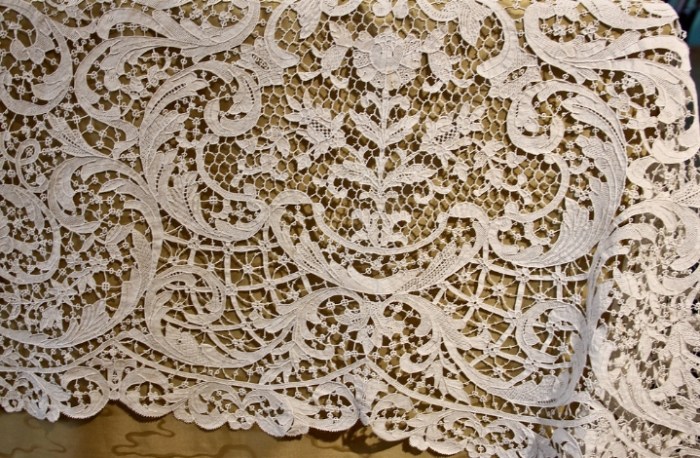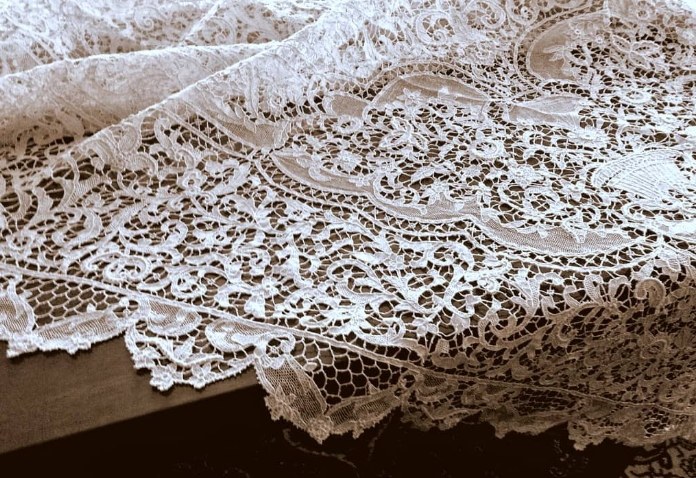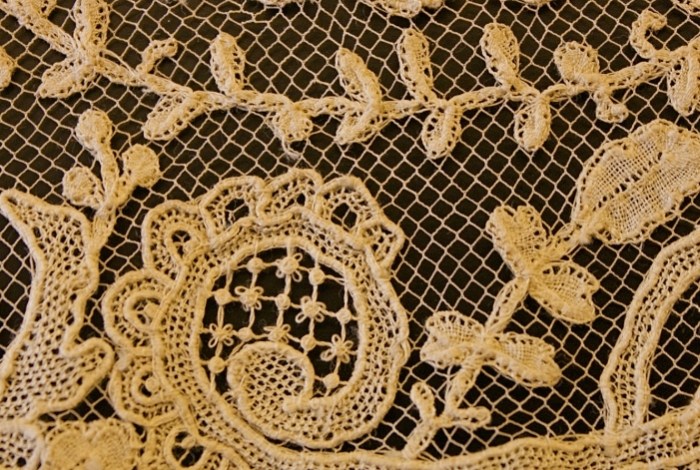Burano Lace: The Timeless Art of Venetian Needlework & Its 500-Year Legacy
What is Burano lace? Explore Venice’s legendary needlework tradition—its 16th-century origins, intricate handmade patterns, and why this colorful island still crafts the world’s finest lace today.
Table of Contents
Introduction to Burano Lace

The Enchanting Island of Burano
Nestled in the Venetian Lagoon, Burano is a vibrant island renowned for its colorful houses and the delicate art of lace-making. This small island, with its narrow canals and lively atmosphere, has been a hub of lace production for centuries, attracting visitors from all over the world. As a local resident of Burano, I take great pride in sharing the rich history, core craftsmanship, and unique experiences associated with Burano lace.
The Legacy of Burano Lace
Burano lace is not just a craft; it's a symbol of our island's identity and heritage. The tradition of lace-making in Burano dates back to the 16th century when local women, seeking to supplement their family's income, began creating intricate lace patterns. Over time, this skill was passed down through generations, evolving into a highly regarded art form that is now synonymous with Burano.
Historical Background of Burano Lace

Origins and Early Development
The Influence of Venetian Nobility
The origins of Burano lace can be traced back to the influence of Venetian nobility. During the Renaissance, the Venetian Republic was a major center of trade and culture, attracting artists and artisans from across Europe. The noblewomen of Venice, known for their exquisite taste in fashion, demanded the finest lace for their gowns and accessories. Burano, with its skilled lace-makers, became a supplier to the Venetian court, establishing a reputation for quality and craftsmanship.
The Role of Nuns and Convents
Another significant factor in the development of Burano lace was the role of nuns and convents. Many convents in the Venetian Lagoon, including those on Burano, had lace-making workshops where women were taught the art. These workshops not only provided a source of income for the convents but also helped preserve the tradition of lace-making. The nuns, with their meticulous attention to detail, contributed to the refinement of Burano lace techniques.
Evolution Over the Centuries
The Golden Age of Burano Lace
The 18th and 19th centuries are often referred to as the golden age of Burano lace. During this period, the demand for Burano lace soared, both in Italy and abroad. Lace-makers on the island became highly skilled, creating elaborate patterns that were in high demand among the European aristocracy. The lace industry flourished, providing employment for many families on Burano.
The Impact of Industrialization
However, the advent of industrialization in the 19th century posed a significant challenge to Burano lace. Machine-made lace, which was cheaper and faster to produce, began to flood the market. This led to a decline in the demand for handmade Burano lace, and many lace-makers were forced to abandon their craft. Despite these challenges, a dedicated group of artisans persevered, keeping the tradition alive.
Revival and Modern Recognition
The Efforts of Local Artisans
In the 20th century, there was a renewed interest in traditional crafts, including Burano lace. Local artisans, along with government and cultural organizations, worked to revive the lace industry. They established lace-making schools, organized exhibitions, and promoted Burano lace as a unique cultural heritage. These efforts paid off, and Burano lace began to regain its popularity.
UNESCO Recognition
In recent years, Burano lace has received international recognition. In 2019, the traditional lace-making techniques of Burano were inscribed on the UNESCO Representative List of the Intangible Cultural Heritage of Humanity. This recognition has not only elevated the status of Burano lace but also highlighted the importance of preserving traditional crafts in a modern world.
Core Craftsmanship of Burano Lace

The Materials Used
Thread Selection
One of the key aspects of Burano lace is the choice of thread. Traditionally, lace-makers on Burano used fine linen or silk threads. Linen threads, known for their strength and durability, were often used for everyday lace items, while silk threads, with their softness and sheen, were reserved for more elaborate and decorative pieces. Today, lace-makers also use cotton and synthetic threads, depending on the desired effect and purpose of the lace.
Dyeing Process
The dyeing of threads is another important step in the lace-making process. Historically, natural dyes were used, derived from plants, roots, and insects. These dyes produced a range of colors, from soft pastels to deep, rich hues. Modern lace-makers may also use synthetic dyes, which offer a wider color palette and better colorfastness. The dyeing process requires precision and skill to ensure that the threads are evenly colored and maintain their quality.
The Techniques Employed
Needle Lace
Needle lace is one of the most common techniques used in Burano lace-making. It involves creating the lace pattern using a needle and thread. The lace-maker starts by making a series of small stitches on a piece of parchment or fabric, forming the outline of the design. Then, using various needlework stitches, such as buttonhole stitch, blanket stitch, and picot stitch, the lace-maker fills in the pattern, creating intricate details and textures. Needle lace allows for a high degree of precision and creativity, making it ideal for creating delicate and detailed lace designs.
Bobbin Lace
Bobbin lace is another traditional technique used in Burano. It involves using bobbins, which are small spools of thread, to create the lace. The lace-maker winds the thread onto the bobbins and then manipulates them in a specific pattern, weaving the threads together to form the lace. Bobbin lace requires a lot of patience and skill, as the lace-maker must carefully control the movement of the bobbins to create the desired pattern. This technique is often used for creating larger lace items, such as tablecloths, curtains, and bedspreads.
Combined Techniques
In some cases, lace-makers on Burano combine needle lace and bobbin lace techniques to create unique and complex designs. By using both techniques, they can achieve a greater variety of textures and patterns, adding depth and dimension to the lace. This combination of techniques requires a high level of expertise and creativity, as the lace-maker must seamlessly integrate the different elements of the lace.
The Art of Pattern Design
Traditional Patterns
Burano lace is known for its rich and diverse patterns, many of which have been passed down through generations. Traditional patterns often feature motifs inspired by nature, such as flowers, leaves, and birds. These patterns are characterized by their intricate details and symmetry, reflecting the skill and artistry of the lace-makers. Some of the most famous traditional Burano lace patterns include the "Rosa di Venezia" (Venetian Rose) and the "Giglio" (Lily).
Modern Innovations
While traditional patterns remain an important part of Burano lace, modern lace-makers also experiment with new designs and techniques. They draw inspiration from contemporary art, fashion, and culture, creating lace patterns that are both innovative and relevant. Some lace-makers even incorporate elements of other crafts, such as embroidery and beading, into their lace designs, adding a unique touch to their work.
Shopping Guide for Burano Lace

Where to Shop
Lace Shops on Burano
Burano is home to numerous lace shops, each offering a unique selection of lace items. These shops are often run by local lace-makers or their families, providing visitors with an opportunity to purchase authentic Burano lace directly from the source. Some of the most well-known lace shops on Burano include "L'Arte della Merletteria" and "Merletteria Burano." These shops carry a wide range of lace products, from small accessories to large home decor items.
Markets and Fairs
In addition to lace shops, visitors can also find Burano lace at local markets and fairs. The Burano Lace Festival, held annually in September, is a great opportunity to see a wide variety of lace items and meet local lace-makers. During the festival, the streets of Burano are filled with stalls selling lace, as well as other local crafts and food. Other markets and fairs in the Venetian Lagoon may also feature Burano lace, offering visitors a chance to browse and purchase lace items in a more relaxed setting.
What to Look for When Buying
Authenticity
When buying Burano lace, it's important to ensure that the lace is authentic. Look for lace items that are made by local lace-makers using traditional techniques. Authentic Burano lace will often have a label or certificate indicating its origin and authenticity. Be wary of lace items that are mass-produced or made with machine-made lace, as these may not have the same quality and craftsmanship as handmade Burano lace.
Quality
The quality of Burano lace can vary depending on the skill of the lace-maker and the materials used. Look for lace items that are made with fine, high-quality threads and have a neat and even stitching. Check for any loose threads or imperfections in the lace. Authentic Burano lace is known for its durability and longevity, so investing in a high-quality piece will ensure that it lasts for years to come.
Price
The price of Burano lace can vary widely depending on the size, complexity, and quality of the lace item. Small accessories, such as lace handkerchiefs or bookmarks, may be relatively affordable, while larger items, such as tablecloths or curtains, can be quite expensive. When shopping for Burano lace, it's important to set a budget and compare prices at different shops and markets. Keep in mind that authentic Burano lace is a handmade craft, and the price reflects the skill and time invested in creating the lace.
Popular Lace Products
Accessories
Burano lace accessories are a popular choice among visitors. Lace handkerchiefs, scarves, and hair accessories are elegant and versatile, adding a touch of sophistication to any outfit. These accessories make great gifts for friends and family, or as a special treat for yourself.
Home Decor
Burano lace is also widely used in home decor. Lace tablecloths, curtains, and bedspreads can add a touch of romance and elegance to any room. These lace items are often made with larger patterns and more intricate designs, making them a statement piece in any home.
Clothing
In recent years, Burano lace has also made its way into the fashion world. Lace collars, cuffs, and trim are often used to add a delicate and feminine touch to clothing. Some designers even create entire garments using Burano lace, showcasing the beauty and versatility of this traditional craft.
Depth Experience of Burano Lace
Visiting Lace-Making Workshops
Hands-On Experience
One of the best ways to truly appreciate the art of Burano lace is to visit a lace-making workshop. Many workshops on Burano offer visitors the opportunity to try their hand at lace-making under the guidance of a local lace-maker. This hands-on experience allows you to learn the basic techniques of lace-making and gain a deeper understanding of the skill and patience required to create this delicate craft.
Observing Master Lace-Makers
Even if you don't want to try lace-making yourself, visiting a workshop to observe master lace-makers at work is a fascinating experience. Watching their skilled hands manipulate the needles and bobbins, creating intricate patterns with precision and grace, is a testament to the artistry and dedication of these artisans. You can also ask questions and learn more about the history and techniques of Burano lace from the lace-makers themselves.
Attending Lace-Making Demonstrations
Cultural Events
Throughout the year, Burano hosts various cultural events and festivals that feature lace-making demonstrations. These events are a great opportunity to see lace-makers in action and learn more about the tradition of Burano lace. You can watch as they create beautiful lace items right before your eyes, and even purchase some of their work as a souvenir.
Guided Tours
Some guided tours of Burano also include visits to lace-making demonstrations. These tours are led by knowledgeable guides who can provide you with historical and cultural context about Burano lace. They can also take you to different lace shops and workshops, allowing you to explore the island's lace industry in depth.
Learning About the Lace-Making Community
The Role of Women
Lace-making has traditionally been a female-dominated craft on Burano. For centuries, women have played a vital role in preserving and passing down the lace-making tradition. Many lace-makers on the island are part of a long lineage of lace-makers, with the skill being passed down from mother to daughter. Learning about the role of women in the lace-making community can provide you with a deeper appreciation for the cultural significance of Burano lace.
Community Support and Collaboration
The lace-making community on Burano is a close-knit one, with lace-makers often supporting and collaborating with each other. They share knowledge, techniques, and resources, working together to ensure the survival and growth of the lace industry. This sense of community and collaboration is an important aspect of Burano lace culture, and it adds to the charm and authenticity of the lace-making experience on the island.
Classic Products of Burano Lace
Traditional Lace Items
Lace Collars and Cuffs
Lace collars and cuffs are iconic Burano lace products. These delicate accessories were once a staple of Venetian fashion, adding a touch of elegance to gowns and shirts. Today, lace collars and cuffs are still popular, both as vintage-inspired fashion pieces and as decorative elements in clothing and home decor.
Lace Handkerchiefs
Lace handkerchiefs are another classic Burano lace item. These small, square pieces of lace are often embroidered with intricate patterns and make a beautiful and practical gift. Lace handkerchiefs can be used as a fashion accessory, tucked into a pocket or tied around the wrist, or as a decorative item in a home.
Lace Tablecloths
Lace tablecloths are a symbol of luxury and sophistication. Made with fine lace and often featuring elaborate patterns, lace tablecloths can transform a dining table into a work of art. They are a popular choice for special occasions, such as weddings and anniversaries, and can be passed down through generations as a family heirloom.
Modern Lace Innovations
Lace Jewelry
In recent years, lace has been incorporated into jewelry design, creating unique and eye-catching pieces. Lace earrings, necklaces, and bracelets combine the delicate beauty of lace with the durability of metal or other materials. These modern lace innovations offer a fresh and contemporary take on the traditional craft.
Lace Fashion Accessories
Lace is also making its way into modern fashion accessories. Lace clutches, belts, and hats add a touch of romance and femininity to any outfit. These accessories are often made with a combination of lace and other materials, such as leather or fabric, creating a stylish and versatile look.
Lace Home Decor Items
In addition to traditional lace tablecloths, there are now many other lace home decor items available. Lace curtains, lampshades, and wall hangings can add a touch of elegance and charm to any room. These modern lace home decor items allow you to incorporate the beauty of Burano lace into your everyday life.
Q&A
1. Why is Burano famous for lace?
Burano is famous for lace due to its long and rich history of lace-making. The tradition dates back to the 16th century when local women began creating intricate lace patterns to supplement their family's income. Over time, the skill of lace-making was passed down through generations, and Burano lace became renowned for its quality, craftsmanship, and unique designs. The influence of Venetian nobility, the role of nuns and convents, and the dedication of local artisans have all contributed to Burano's reputation as a center of lace production. Today, Burano lace is recognized as a symbol of the island's cultural heritage and is celebrated around the world.
2. Is lace expensive in Burano?
The price of lace in Burano can vary widely depending on the size, complexity, and quality of the lace item. Small accessories, such as lace handkerchiefs or bookmarks, may be relatively affordable, while larger items, such as tablecloths or curtains, can be quite expensive. Authentic Burano lace is a handmade craft, and the price reflects the skill and time invested in creating the lace. However, compared to other high-end lace products, Burano lace is often considered to be reasonably priced, especially considering its quality and cultural significance. When shopping for lace in Burano, it's important to set a budget and compare prices at different shops and markets to find the best value for your money.
3. How is Burano lace made?
Burano lace is made using a variety of techniques, including needle lace and bobbin lace. In needle lace, a lace-maker uses a needle and thread to create the lace pattern on a piece of parchment or fabric. Various needlework stitches are used to fill in the pattern, creating intricate details and textures. In bobbin lace, bobbins wound with thread are manipulated in a specific pattern to weave the threads together and form the lace. Both techniques require a high degree of skill, patience, and precision. Lace-makers on Burano often combine these techniques to create unique and complex designs. The choice of thread, dyeing process, and pattern design also play important roles in the creation of Burano lace.
4. Where can I see lace-making in Burano?
There are several places in Burano where you can see lace-making in action. Lace-making workshops are a great option, as they often offer demonstrations and even hands-on experiences for visitors. Some well-known workshops on Burano include "L'Arte della Merletteria" and "Merletteria Burano." Additionally, the Burano Lace Festival, held annually in September, is a fantastic opportunity to see lace-makers at work and learn more about the tradition of Burano lace. During the festival, the streets of Burano are filled with stalls selling lace, as well as lace-making demonstrations and other cultural events. Some guided tours of Burano also include visits to lace-making workshops or demonstrations, providing a more in-depth exploration of the island's lace industry.